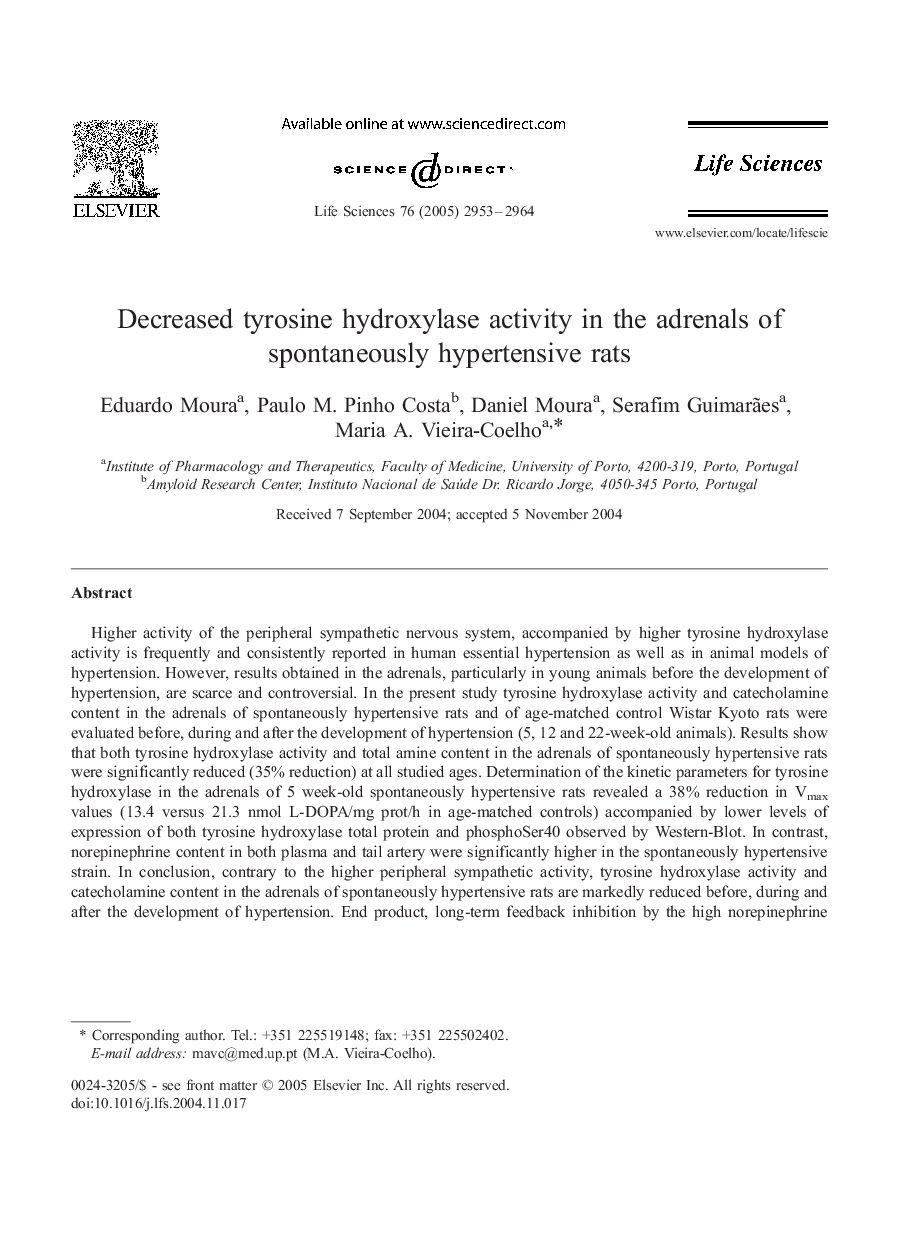| Article ID | Journal | Published Year | Pages | File Type |
|---|---|---|---|---|
| 2555351 | Life Sciences | 2005 | 12 Pages |
Higher activity of the peripheral sympathetic nervous system, accompanied by higher tyrosine hydroxylase activity is frequently and consistently reported in human essential hypertension as well as in animal models of hypertension. However, results obtained in the adrenals, particularly in young animals before the development of hypertension, are scarce and controversial. In the present study tyrosine hydroxylase activity and catecholamine content in the adrenals of spontaneously hypertensive rats and of age-matched control Wistar Kyoto rats were evaluated before, during and after the development of hypertension (5, 12 and 22-week-old animals). Results show that both tyrosine hydroxylase activity and total amine content in the adrenals of spontaneously hypertensive rats were significantly reduced (35% reduction) at all studied ages. Determination of the kinetic parameters for tyrosine hydroxylase in the adrenals of 5 week-old spontaneously hypertensive rats revealed a 38% reduction in Vmax values (13.4 versus 21.3 nmol L-DOPA/mg prot/h in age-matched controls) accompanied by lower levels of expression of both tyrosine hydroxylase total protein and phosphoSer40 observed by Western-Blot. In contrast, norepinephrine content in both plasma and tail artery were significantly higher in the spontaneously hypertensive strain. In conclusion, contrary to the higher peripheral sympathetic activity, tyrosine hydroxylase activity and catecholamine content in the adrenals of spontaneously hypertensive rats are markedly reduced before, during and after the development of hypertension. End product, long-term feedback inhibition by the high norepinephrine plasma levels could be responsible for this reduction, establishing yet another regulatory mechanism of tyrosine hydroxylase operating in adrenal cromaffin cells.
